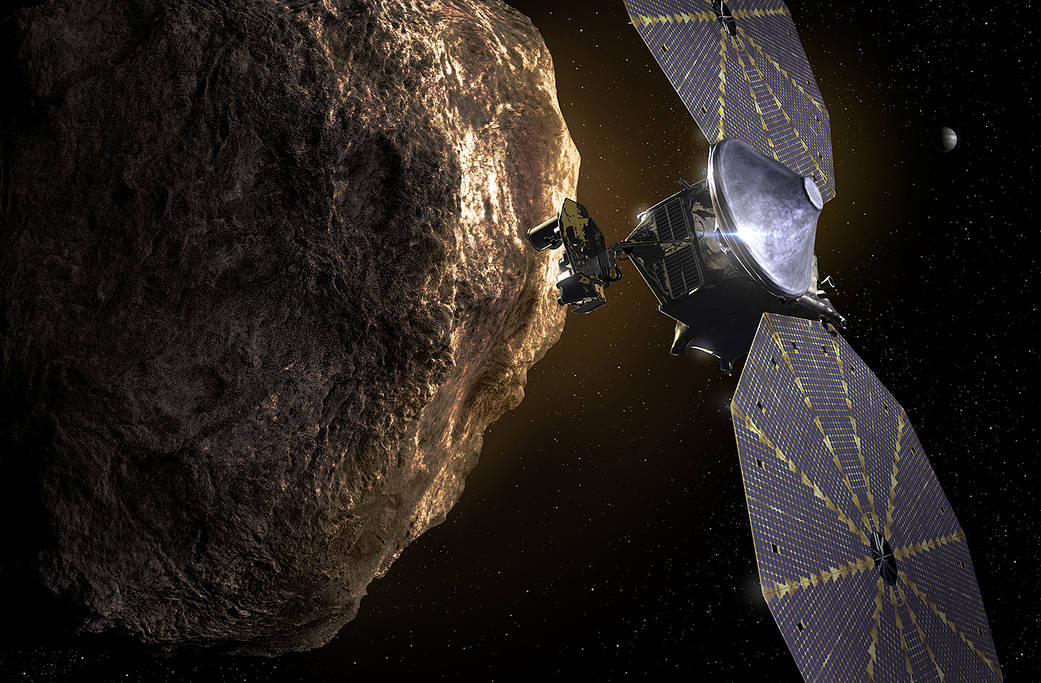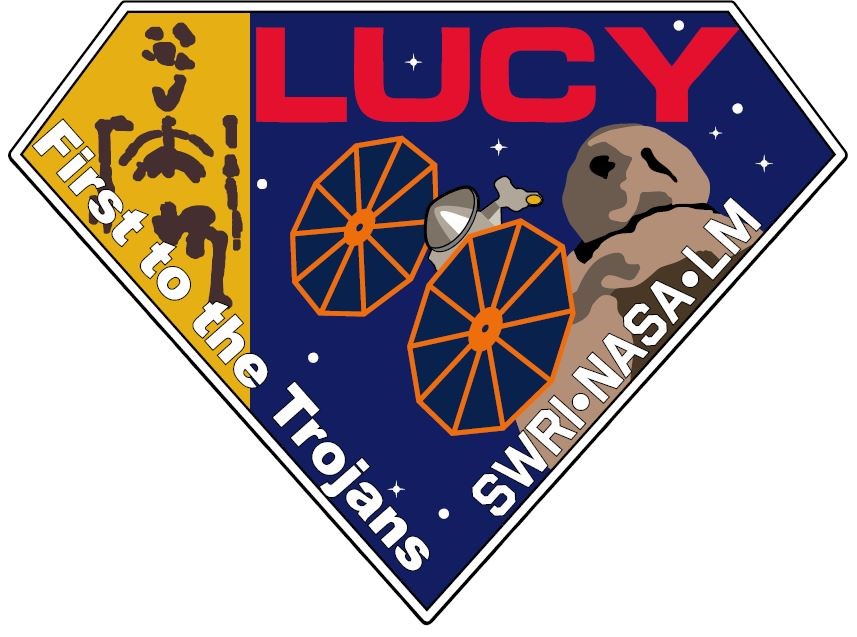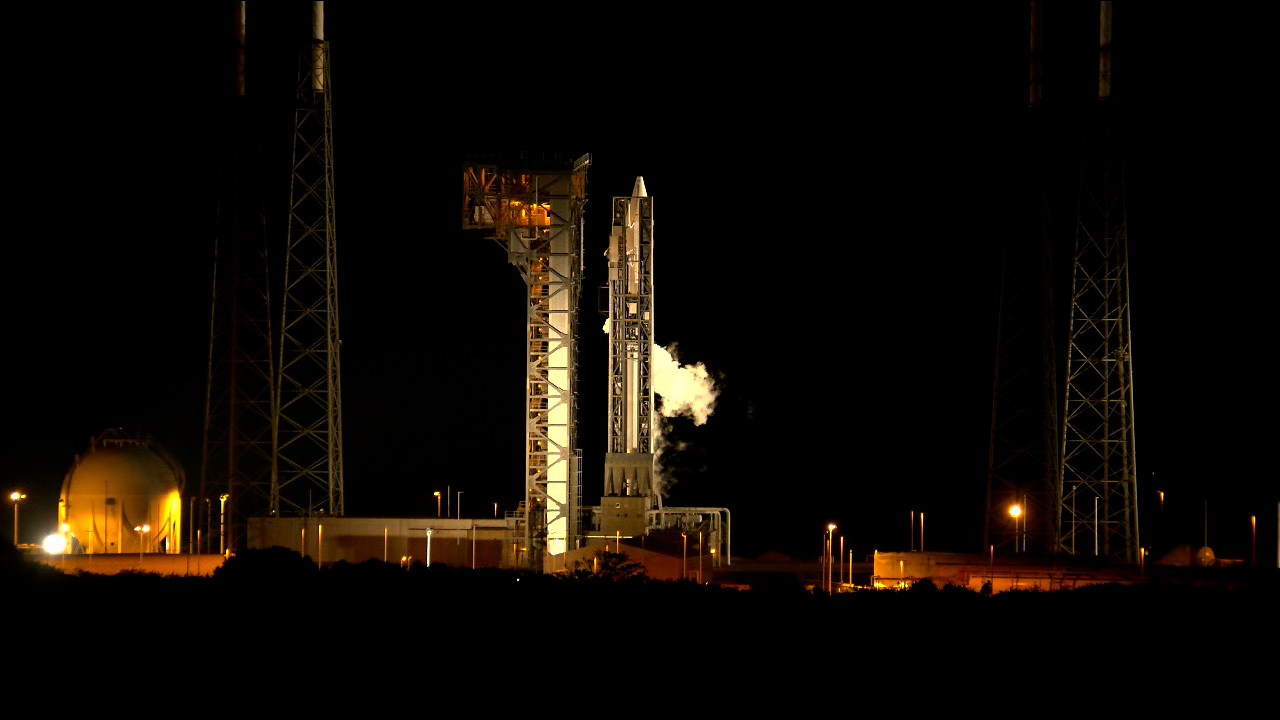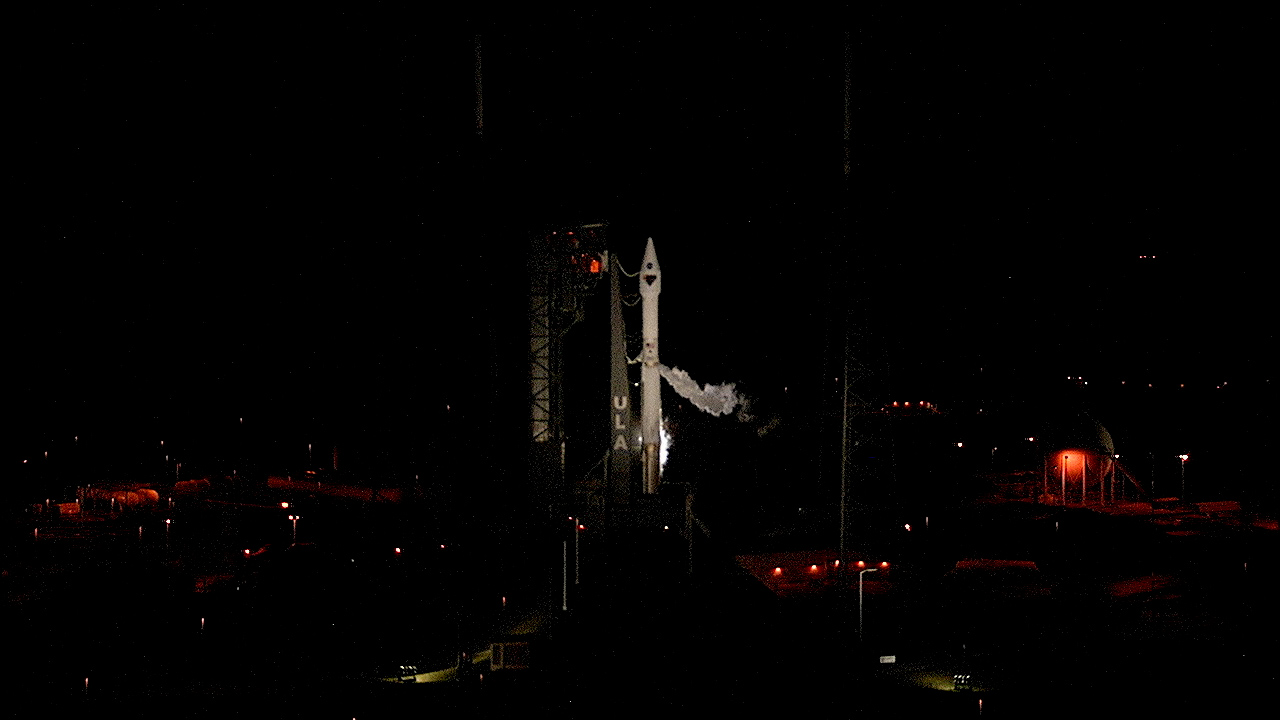A weather update from Will Ulrich, weather officer with the 45th Weather Squadron, reports conditions look good for launch of the Lucy mission.
Tag: ULA
The Lucy Science Payloads

Lucy will explore the Trojan asteroids with a suite of remote sensing instruments:
- L’Ralph – an instrument provided by NASA’s Goddard Space Flight Center in Greenbelt, Maryland, that consists of two parts:
L’Ralph Linear Etalon Imaging Spectral Array (LEISA), an infrared imaging spectrometer that will reveal the absorption lines that serve as the fingerprints for different silicates, ices and organics that may be on the surface of the Trojan asteroids, and
L’Ralph Multi-spectral Visible Imaging Camera (MVIC), that will take color images of the Trojans to help determine their composition and look for indications of surface activity.
- Lucy Long Range Reconnaissance Imager (L‘LORRI) – a high resolution, panchromatic visible camera made by the Johns Hopkins University Applied Physics Laboratory in Laurel, Maryland. L’LORRI will provide the most detailed images of the surface of the Trojan asteroids.
- Lucy Thermal Emission Spectrometer (L’TES) – an instrument built by Arizona State University in Tempe, Arizona, that will measure the surface temperature of the Trojan asteroids by observing the thermal infrared spectrum, helping to understand the physical properties of the surface material.
Additionally, the navigation cameras will be used to determine the shapes of the Trojan asteroids. The High Gain Antenna will be used to both communicate with Earth and to carry out radio science experiments to measure the masses of the Trojan asteroids. Lucy Radio science is led by a team from the University of Cologne, Germany.
The Lucy Mission – First to the Trojan Asteroids
 Lucy will explore the Jupiter Trojan asteroids. During its 12-year mission, the spacecraft will explore a record-breaking number of asteroids, flying by one main belt asteroid and seven Trojan asteroids. These small bodies are remnants of our early solar system, now trapped in stable orbits associated with – but not close to – the giant planet Jupiter. The Trojan asteroids are in two “swarms” that lead and follow Jupiter in its orbit around the Sun and are almost as numerous as the objects in the Main Asteroid Belt. Lucy also will circle back to Earth three times for gravity assists, making it the first spacecraft ever to return to the vicinity of Earth from the outer solar system.
Lucy will explore the Jupiter Trojan asteroids. During its 12-year mission, the spacecraft will explore a record-breaking number of asteroids, flying by one main belt asteroid and seven Trojan asteroids. These small bodies are remnants of our early solar system, now trapped in stable orbits associated with – but not close to – the giant planet Jupiter. The Trojan asteroids are in two “swarms” that lead and follow Jupiter in its orbit around the Sun and are almost as numerous as the objects in the Main Asteroid Belt. Lucy also will circle back to Earth three times for gravity assists, making it the first spacecraft ever to return to the vicinity of Earth from the outer solar system.
The Lucy mission is named after the fossilized skeleton of an early hominin, or pre-human ancestor, that was found in Ethiopia in 1974 and named “Lucy,” by the team of paleontologists who discovered it.
Lucy has the following science objectives at each of its destinations:
- Surface Geology – Lucy will map the shape, albedo, and crater spatial and size-frequency distributions; determine the nature of crustal structure and layering; and determine the relative ages of surface units
- Surface Color and Composition – Lucy will map the color, composition and regolith properties of the surface, and determine the distribution of minerals, ices, and organic species
- Interiors and Bulk Properties – Lucy will determine the masses and densities, and study sub-surface composition via excavation by craters, factures, ejecta blankets, and exposed bedding.
- Satellites and Rings – Lucy will look for and study satellites and/or rings that might orbit the targeted Trojan asteroids.
NASA’s Lucy Ready for Launch atop Atlas V Rocket

Good morning, and welcome to launch day for NASA’s Lucy spacecraft. The first space mission to explore a diverse population of small bodies known as the Jupiter Trojan asteroids will launch on a United Launch Alliance Atlas V 401 rocket from Space Launch Complex-41 at Cape Canaveral Space Force Station in Florida. Launch is targeted for 5:34 a.m. EDT, at the beginning of a 75-minute launch window.
The latest weather update from the 45th Weather Squadron remains at a 90 percent chance of favorable weather today for liftoff of the Atlas V rocket with NASA’s Lucy spacecraft.
Today’s launch blog originates from the NASA News Center here at Kennedy Space Center in Florida. Follow the launch countdown and launch at https://www.nasa.gov/nasalive.
Workhorse Rocket to Launch Lucy to Trojan Asteroids

The rocket standing ready on the pad with NASA’s Lucy spacecraft at Space Launch Complex 41 at Cape Canaveral Space Force Station in Florida, is a United Launch Alliance Atlas V 401 configuration. It is the workhorse of the Atlas V fleet, delivering about half of all Atlas V missions to date. The 401 designation means this rocket has a payload fairing, or nose cone, that is approximately four meters wide, a common core booster with no solid rocket boosters, and a Centaur upper stage with a single engine.
This is the 81st mission of an Atlas rocket, and the 100th mission from SLC-41.
Booster propulsion is provided by the RD-180 engine system, a single engine with two thrust chambers. The RD-180 burns Rocket Propellant-1 (RP-1), a highly purified kerosene, along with liquid oxygen, providing 860,200 pounds of thrust at liftoff. Tanking began this morning at 3.
The booster is controlled by the Centaur second stage avionics system, which provides guidance, flight control and vehicle sequencing functions during the booster and Centaur phases of flight. The single-engine Centaur upper stage is a cryogenic vehicle, fueled with liquid hydrogen and liquid oxygen. The two-piece payload fairing that protects the Lucy spacecraft tops the vehicle.
Stay tuned here for launch countdown coverage and at www.nasa.gov/live beginning at 5 a.m. EDT.
